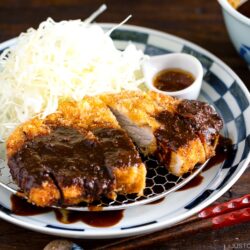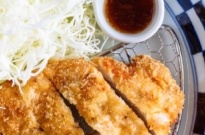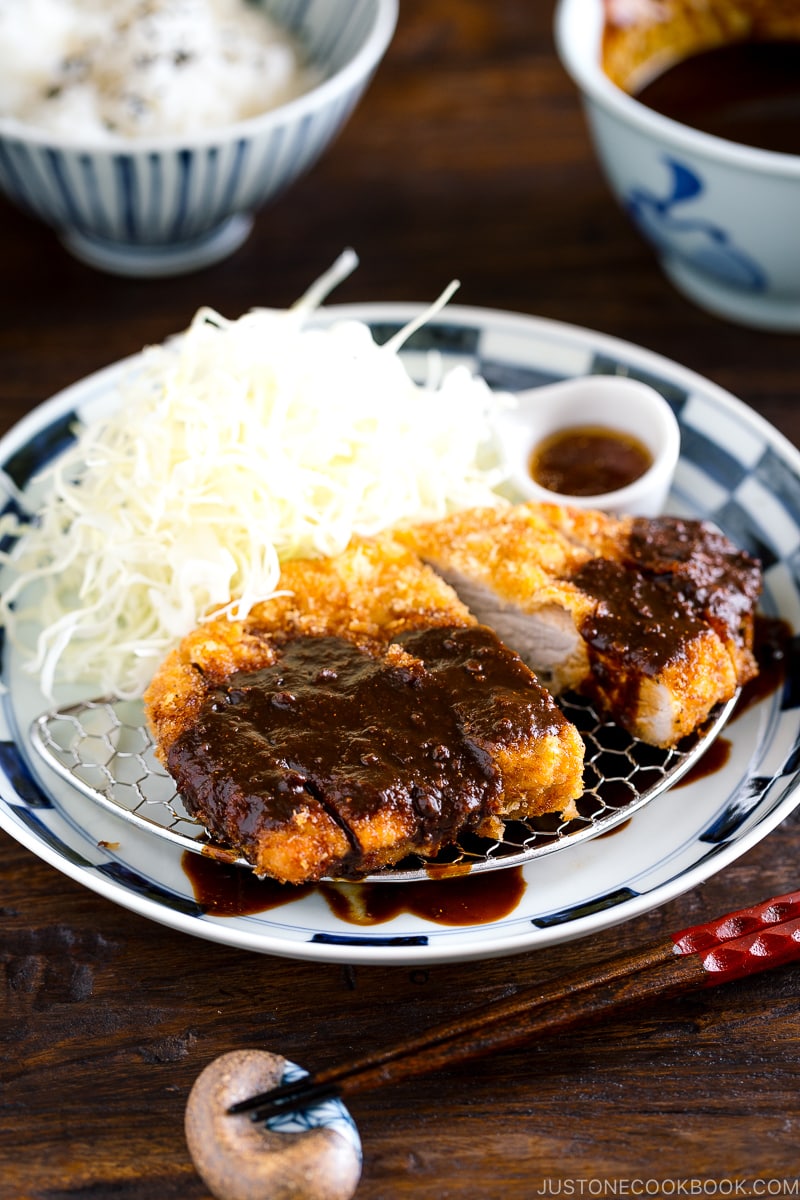
Among all the Nagoya Food we tried, there’s one food that Mr. JOC and I didn’t particularly enjoy as much when we tried it there. Yet we grew to appreciate and enjoy it after trying it again after the trip, and that food was Miso Katsu (味噌カツ).
What is Miso Katsu?
If you thought the tangy and sweet tonkatsu sauce was the only sauce to enjoy Tonkatsu with, then today’s recipe might be a new discovery for you.
In Nagoya, people enjoy eating Tonkatsu with a miso-base sauce which is made of a dark red miso paste called Hatcho Miso (八丁味噌). This miso is not your ordinary red, white or awase miso (mix of red and white).
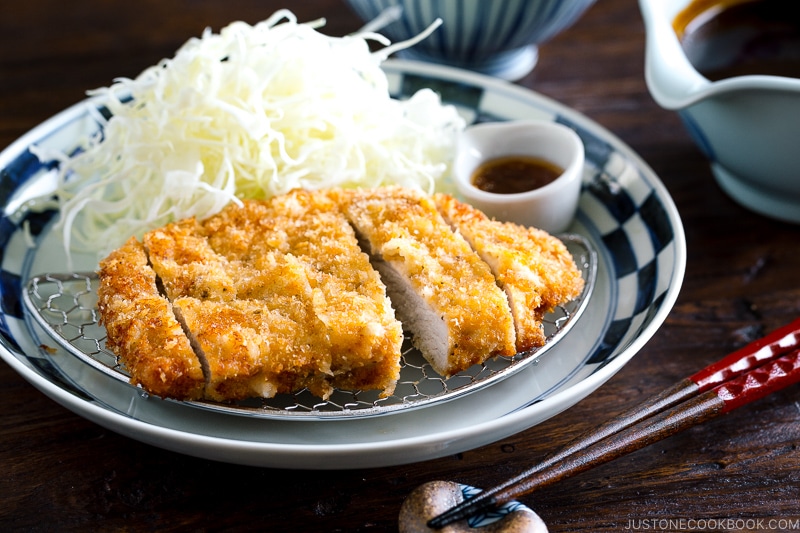
For someone like myself who grew up eating Tonkatsu only with tonkatsu sauce, it was definitely a unique experience and the miso sauce is definitely an acquired taste.
It took me a while to build up my tastebuds to appreciate this new flavor. And guess what, now Mr. JOC and I both love Miso Katsu now and we’re quite excited to introduce this dish to you!
Hatcho Miso 八丁味噌
Hatcho Miso is traditionally made of 100% soybeans (no grains, like rice and wheat, are added), and it is a darker, more reddish-brown than miso made with rice (kome miso 米味噌). How’s the taste? It’s not as sweet as other kinds of miso and it has really intense, bold, and rich flavor with good umami.
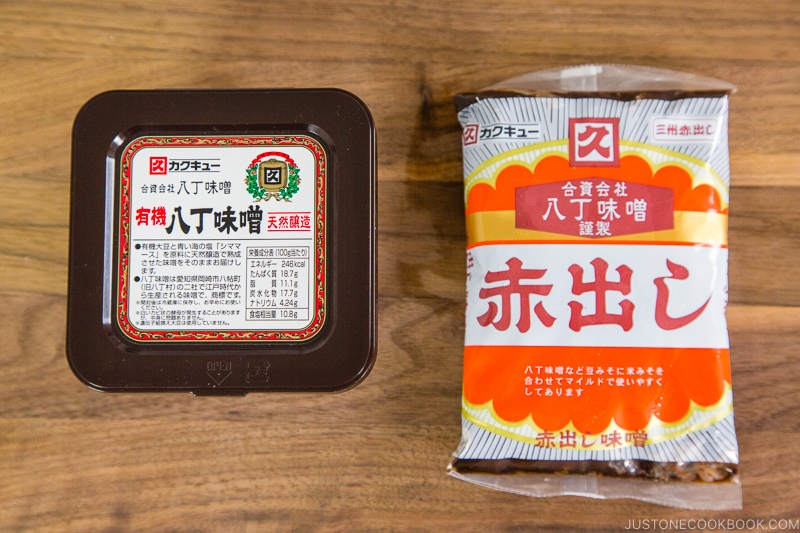
The miso was first created in a village about 870 meters (Hatcho 八丁) west of Okazaki Castle in Aichi prefecture. The miso was named after the “Hatcho Village”.
Hatcho Miso is mostly consumed in Aichi prefecture (where Nagoya is), part of Gifu prefecture, and part of Mie prefecture. You can purchase the miso throughout Japan, but it is rarely used in daily meals.
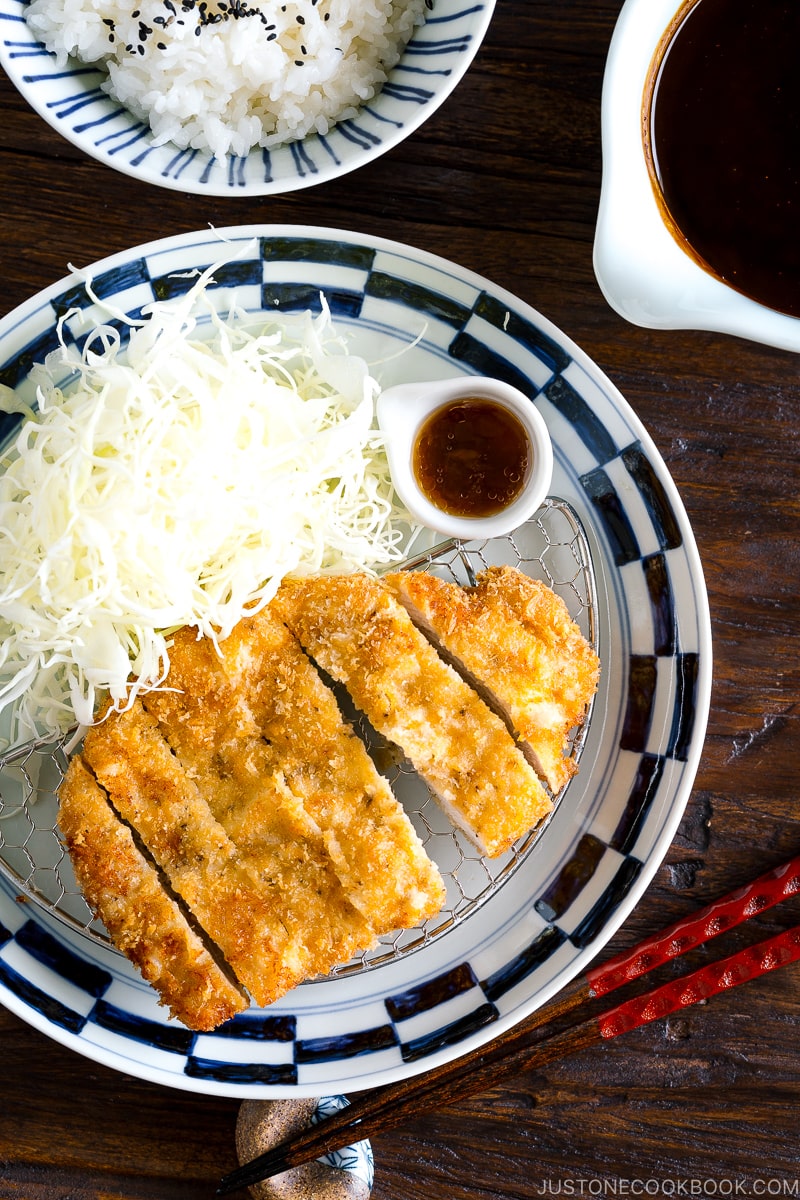
How To Make Miso Sauce for Miso Katsu
Since I already have a delicious Tonkatsu recipe, all I needed was a good miso sauce.
The miso sauce is actually quite simple to make. Hatcho miso is usually diluted with dashi and sweetened with sugar and mirin. Because you sweeten the miso, it is not salty anymore and has a rich and bold taste to it.
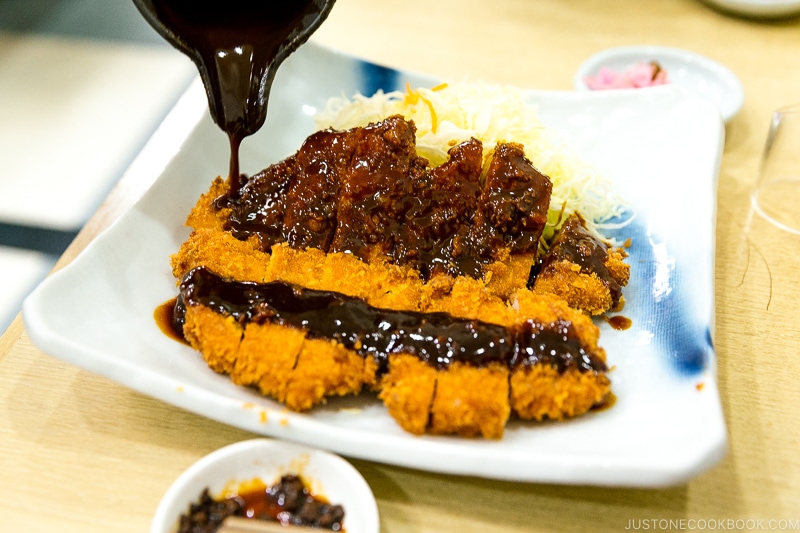
When we were in Nagoya, we visited one of the most popular Miso Katsu restaurants called Yabaton (矢場とん). You can read about our experience here, but guess what I got there.
Not only did we eat their Miso Katsu at the restaurant, but I also purchased their miso sauce and brought it back to the U.S. Yes! Time to experiment and create Just One Cookbook Miso Katsu (dramatic music plays)!
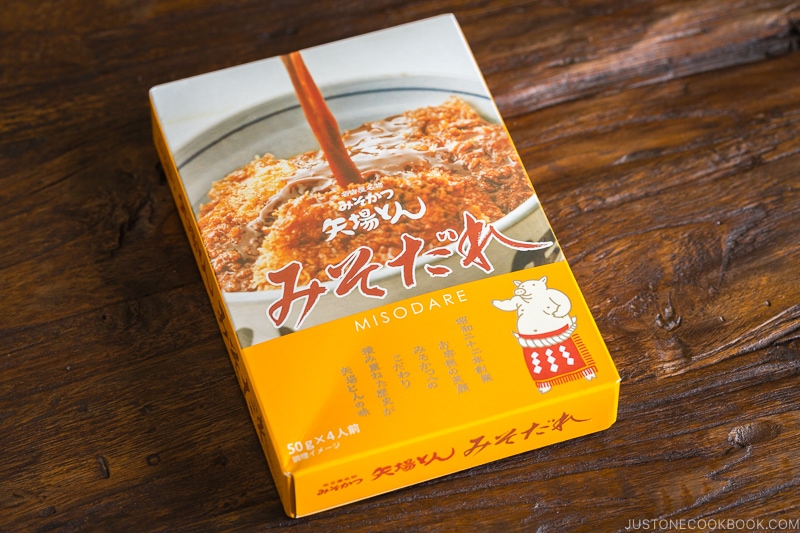
Thanks to the sauce I had purchased, I could compare my own sauce against Yabaton’s sauce side by side. I tried making the sauce with Hatcho Miso as well as other red miso, but I think Hatcho Miso is absolutely necessary to re-create Yabaton’s sauce. Mr. JOC said the sauce I made was even better than Yabaton’s sauce, but I think he’s just being nice. 😉 After several experiments and trials, lots of fried pork chops, our family started to enjoy Miso Katsu.
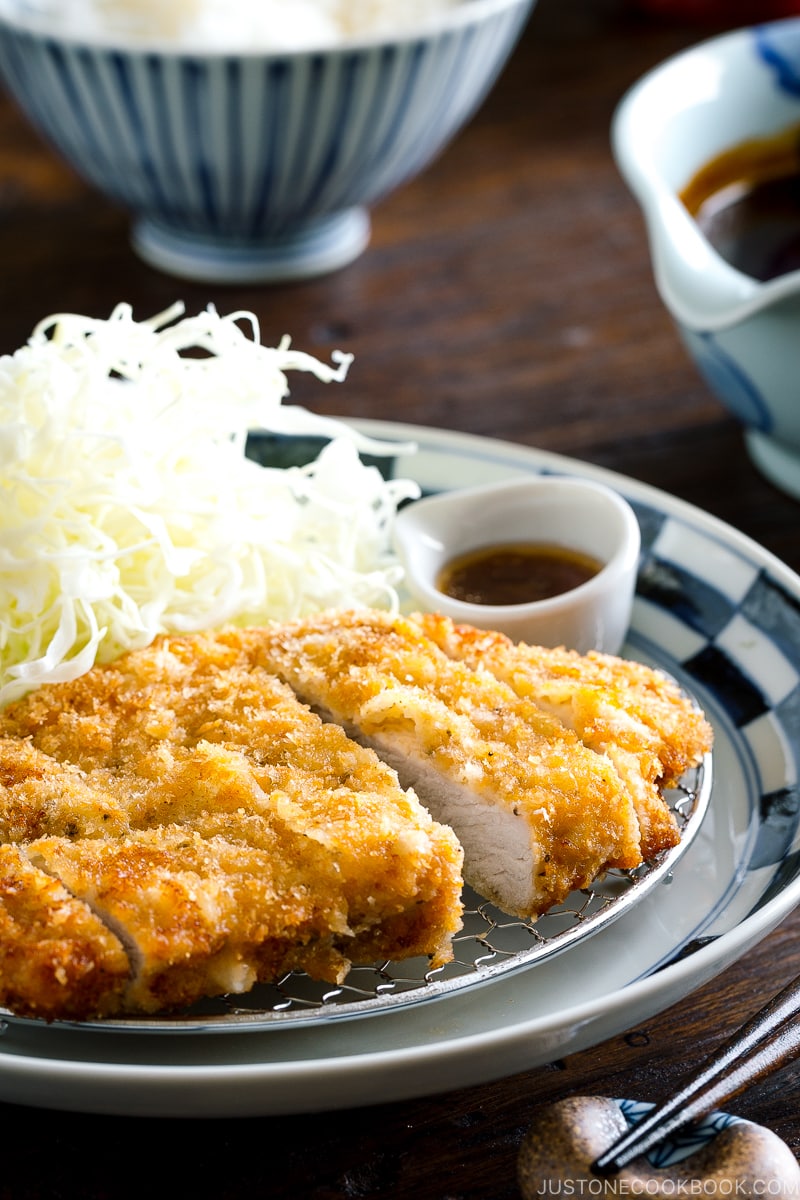
The Best Tonkatsu for Miso Katsu
For those of you who absolutely don’t want to deep fry your Tonkatsu, follow my Baked Tonkatsu recipe (with video). It’s easy, delicious, and pretty close to deep-fried Tonkatsu.
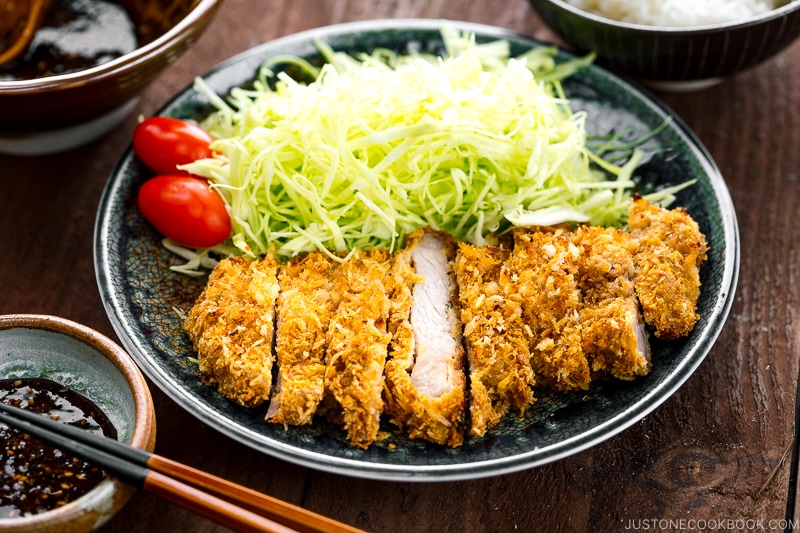
But I will say nothing beats deep-fried crispy hot Tonkatsu! Here are 3 key points to make the best Tonkatsu…
Make a couple of slits: Make a few slits on the connective tissue between the meat and fat. The reason why you do this is that red meat and fat have different elasticities, and when they are cooked they will shrink and expand at different rates. This will allow the meat to stay nice and flat when deep frying and prevent it from curling up.
Pound the meat: Using a meat tenderizer or the back of the knife, pound both sides of the meat to soften it.
Double fry: After the deep frying the first time, take out the meat and let the hot oil on the exterior slowly cook the meat as it sits without overcooking in the hot oil. Then deep fry again for the final crisp texture.
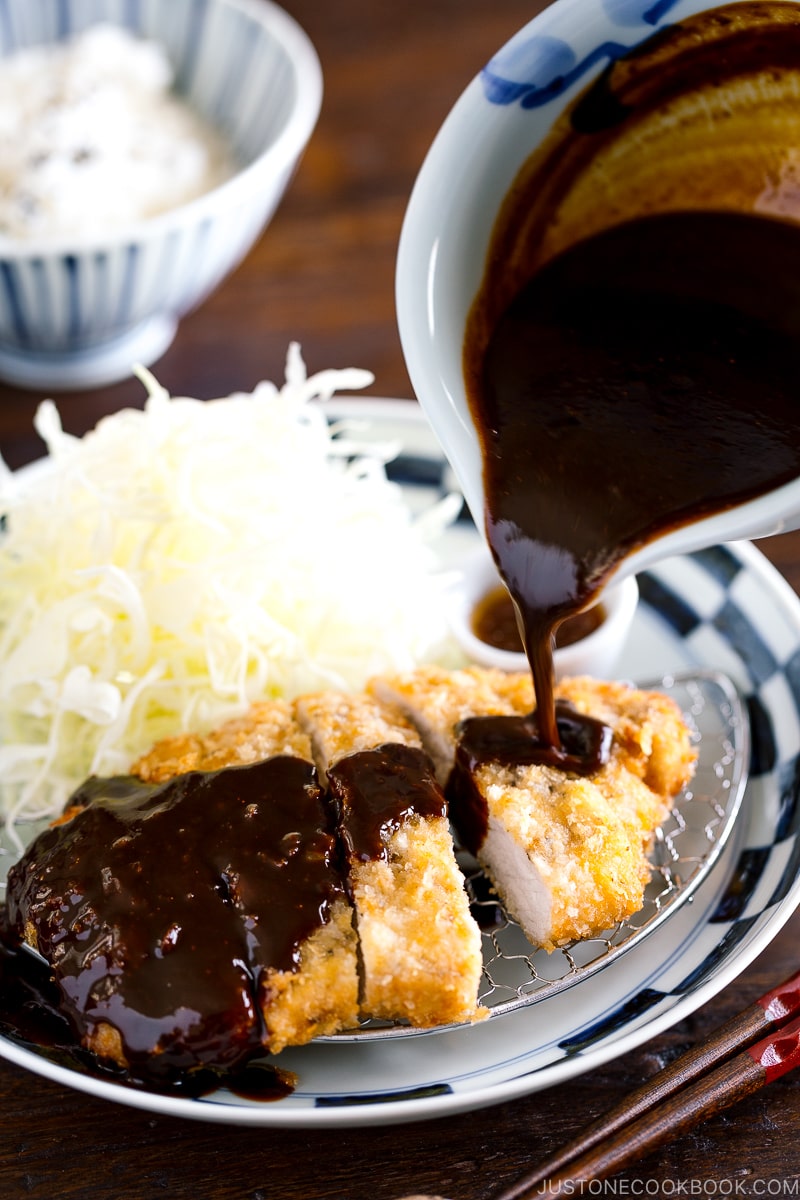
How Else Can You Eat Miso Katsu?
- Miso Katsu Sandwich (味噌カツサンド) – Put the pork and shredded cabbage in the sandwich bread.
- Miso Katsu Donburi (味噌カツ丼) – Put shredded cabbage over rice and drizzle some miso sauce. Then place the Tonkatsu on top and pour plenty of miso sauce. A perfect one-bowl dish!
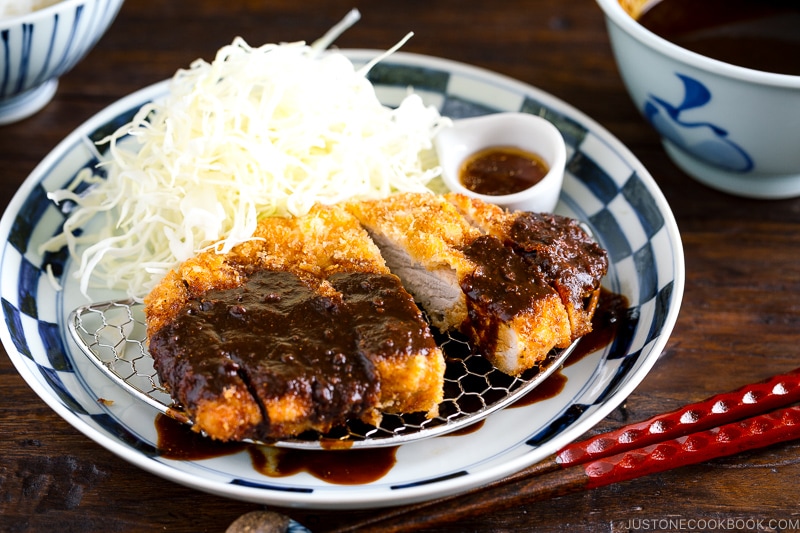
Wish to learn more about Japanese cooking? Sign up for our free newsletter to receive cooking tips & recipe updates! And stay in touch with me on Facebook, Pinterest, YouTube, and Instagram.
Miso Katsu
Ingredients
- ½ head green cabbage (to serve on the side with Miso Katsu)
- 4 pieces boneless pork loin chops (½-inch thick) (1 lb, 454 g)
- Diamond Crystal kosher salt
- freshly ground black pepper
- ¼ cup all-purpose flour (plain flour) (4 Tbsp)
- 1 large egg (50 g each w/o shell)
- 1 Tbsp water
- 1 cup panko (Japanese breadcrumbs)
- 4 cups neutral oil (for deep-frying)
For the Miso Sauce (½ cup, 120 ml)
- 1 Tbsp mirin
- 2 Tbsp sake
- ½ cup dashi (Japanese soup stock)
- 2 Tbsp sugar
- ¼ cup hatcho miso (4 Tbsp)
Instructions
- Gather all the ingredients.
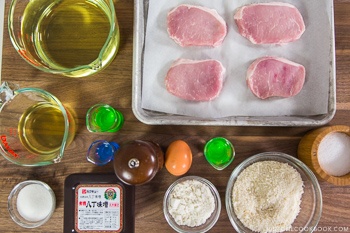
- Cut or shred ½ head green cabbage into thin slices. Wash under cold running water and drain completely. Keep it cool in the refrigerator.
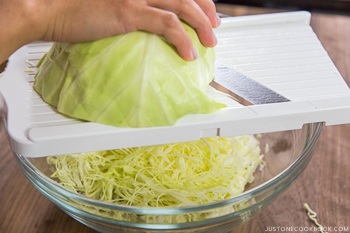
To Make the Miso Sauce
- Heat 1 Tbsp mirin and 2 Tbsp sake in a small saucepan over high heat and let the alcohol evaporate.
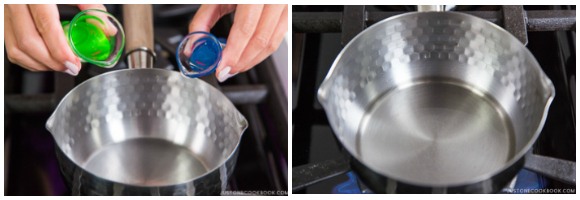
- Lower the heat and add 2 Tbsp sugar, ½ cup dashi (Japanese soup stock), and ¼ cup hatcho miso.

- Combine well with a silicone spatula. Cook for 3 minutes on low heat, stir frequently to avoid burning on the bottom of the saucepan. When the sauce is thickened, turn off the heat and set aside.
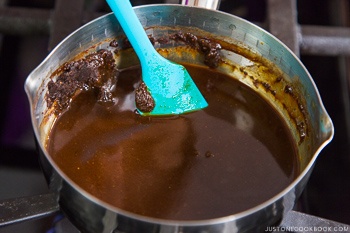
To Prepare the Cutlets
- Remove the extra fat from 4 pieces boneless pork loin chops (½-inch thick) and make a couple of slits on the connective tissue between the meat and fat. Red meat and fat have different elasticities and will shrink and expand at different rate when cooked. These slits will allow the meat to stay nice and flat when deep-frying and prevent curling.
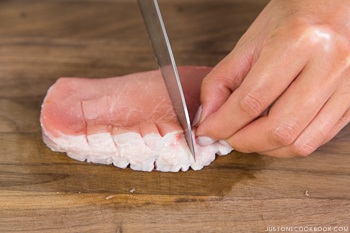
- Pound the meat with a meat pounder, or if you don’t have one then just use the back of the knife. Mold the extended meat back into original shape with your hands.
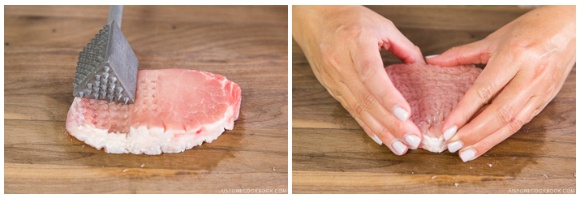
- Season both sides of the meat with Diamond Crystal kosher salt and freshly ground black pepper.
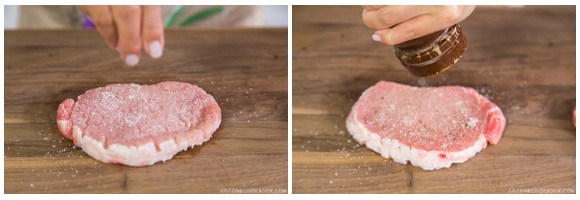
- In a large bowl, whisk together 1 large egg (50 g each w/o shell) and 1 Tbsp water.
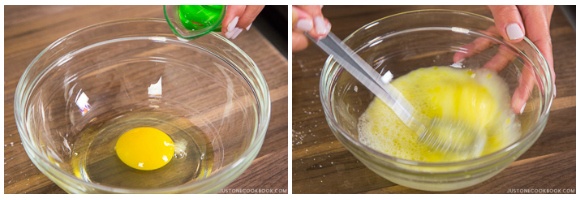
- Dredge the meat in ¼ cup all-purpose flour (plain flour) and remove the excess flour.
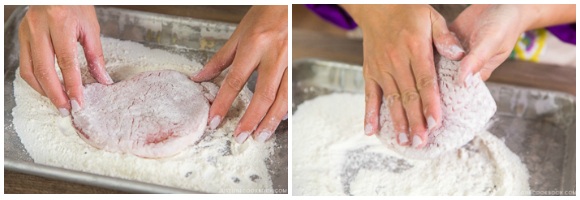
- Then dip in the beaten egg and dredge in 1 cup panko (Japanese breadcrumbs). After removing the excess panko, press gently. While deep-frying, the panko will “pop up” so at this moment they don’t have to be fluffy.
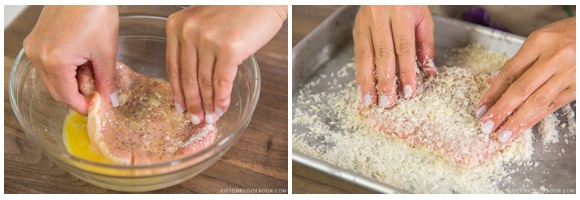
To Deep-Fry
- Heat 4 cups neutral oil in a pot over medium-high heat until the oil reaches 350ºF (180ºC). If you don’t have a thermometer, stick a chopstick in the oil and see if tiny bubbles start to appear around the tip of the chopstick. Alternatively, you can drop one piece of panko into the oil, and if it sinks down to the middle of the oil and comes right up, then that’s around 350ºF (180ºC) as well. When the oil reaches that temperature, gently submerge the pork loin into the oil. Keep watching the oil’s temperature and make sure it doesn’t go over 350ºF (180ºC) or the pork katsu will look burnt.
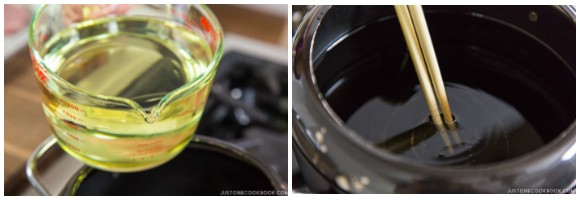
- Deep-fry for 1 minute on one side and flip to cook the other side for 1 minute. If your meat is thinner than ¾ inch, then reduce to 45 seconds for each side.
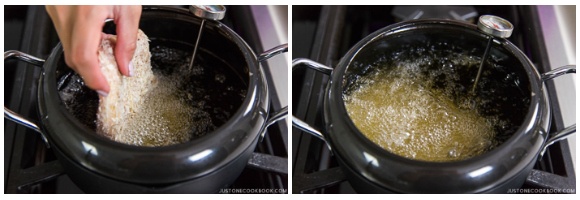
- Now, take out the meat and remove the excess oil by holding it in a vertical position for a few seconds. Place on top of a wire rack (if a wire rack is not available, use a paper towel) and let it sit for 4 minutes. The hot oil on the exterior will slowly continue to cook the meat as it sits. Please do not cut to check whether the inside is cooked or not. We need to keep the panko shell on to retain the heat. While waiting, you can scoop up and discard any fried crumbs in the oil with a fine-mesh strainer.
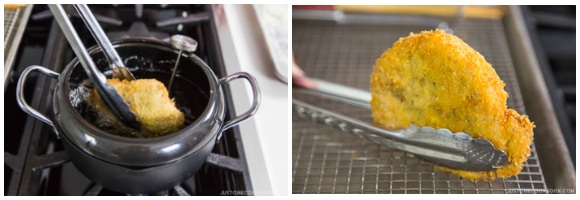
- After resting for 4 minutes, bring the oil back to 350ºF (180ºC) again and deep-fry the meat for 1 minute (about 30 seconds each side).
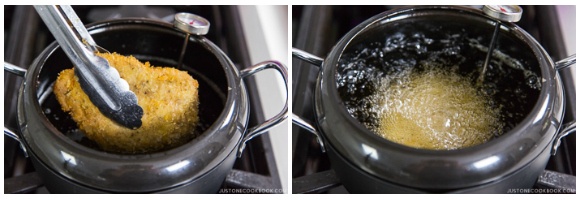
- Remove the cutlet from the oil. Poke the meat with a chopstick; if clear liquid comes out, then it’s done. Drain the oil by holding the meat vertically again for a few seconds. Then, leave it on top of the rack or paper towel for 2 minutes. If you have to use a paper towel, try to keep the meat in a vertical position so it does not get soggy on one side.
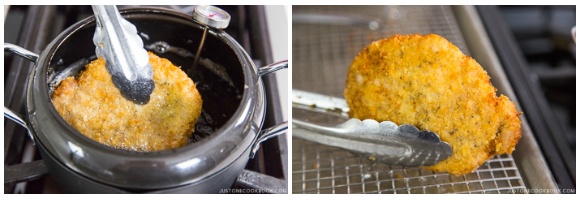
To Serve
- Cut the tonkatsu into large pieces by pressing the knife directly down instead of moving back and forth in a sawing motion. This way, the breading will not come off. Transfer to a plate and serve the shredded cabbage on the side. You can pour the sauce before serving or serve the sauce on the side. Enjoy immediately.
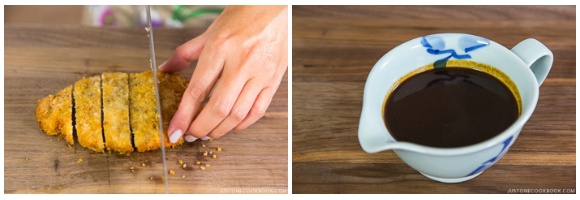
To Store
- You can keep the sauce in an airtight container in the refrigerator for up to 2 weeks and in freezer. You can also use this sauce for marinating the fish or use as a dipping sauce for hot pot, konnyaku, and steamed vegetables.
Nutrition
Did you make this recipe?
Tag @justonecookbook on Instagram so we can see your delicious creation!


